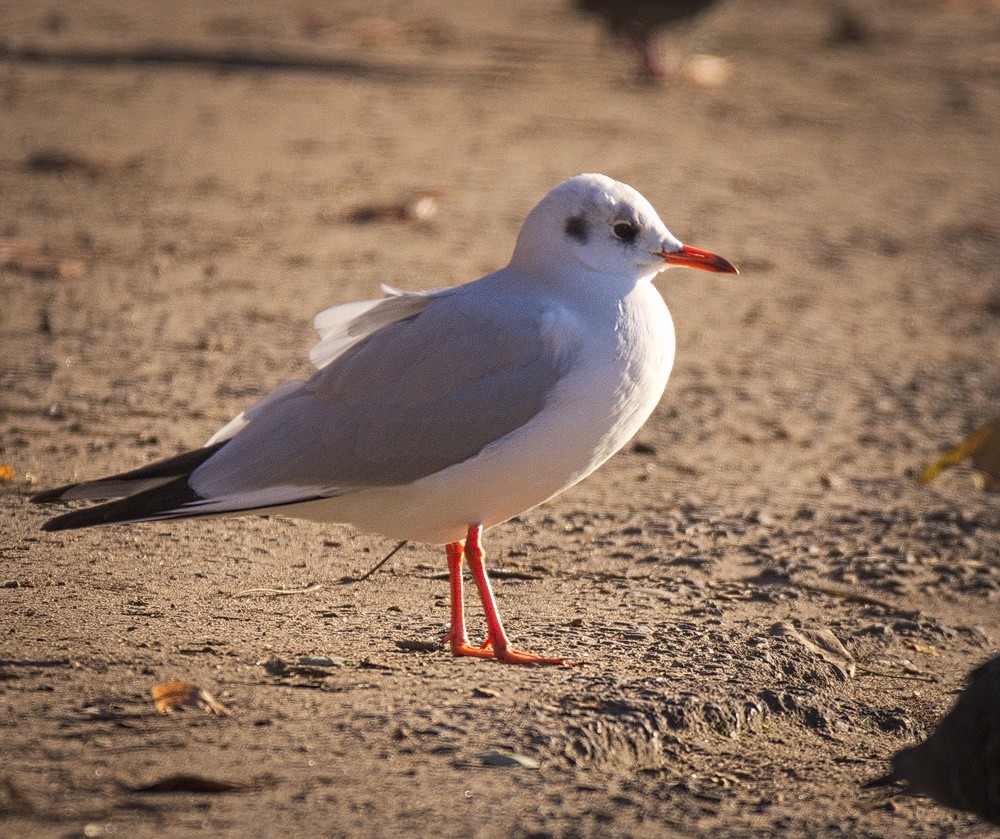Black-headed Gull
A species of Masked Gulls Scientific name : Chroicocephalus ridibundus Genus : Masked Gulls
Black-headed Gull, A species of Masked Gulls
Botanical name: Chroicocephalus ridibundus
Genus: Masked Gulls
Content
Description People often ask General Info
 Photo By hedera.baltica , used under CC-BY-SA-2.0 /Cropped and compressed from original
Photo By hedera.baltica , used under CC-BY-SA-2.0 /Cropped and compressed from original Description
Black-headed Gull is a medium-sized gull found in Europe and Asia. It has a white body and grey wings, and a black head that turns chocolate brown in the summer. It is found in a variety of habitats, including coastal areas, lakes, and wetlands. It is migratory, wintering in southern Europe and parts of Africa. 
Size
38 - 44 cm
Life Expectancy
32.9 years
Nest Placement
Ground
Clutch Size
1 - 4 eggs
Feeding Habits
Black-headed Gull has a varied diet including insects, worms, fish, and mice. They also consume garbage, seeds, and berries, with their diet featuring both aquatic and terrestrial invertebrates and grains.
Habitat
Black-headed Gull are versatile inhabitants of a range of wetland habitats. They primarily favor coastal waters, protected bays, and shallow estuaries for foraging. These birds also frequent inland fresh marshes, lakes, and ponds. During the breeding season, black-headed Gull prefer wet environments such as lakeshores, riverbanks, bogs, moors, grasslands, swamps, and coastal marshes, which provide suitable nest sites. Come winter, the species tends to congregate along seacoasts, in estuaries, and around bays, reflecting their preference for areas with abundant food sources and relatively milder climates.
Nest Behavior
Nesting begins with black-headed Gull forming scrapes in spring. Egg-laying follows, with both parents participating in incubation and chick-rearing, taking turns to guard and feed their young.
Nest Characteristics
Black-headed Gull's nest is a shallow scrape on the ground, often lined with bits of vegetation. In wet areas, it may be constructed into a significant mound hidden within low vegetation.
Dite type
Omnivorous
People often ask
General Info
Feeding Habits
Bird food type
Sounds
Call
Recording location: Belgium
Call
Recording location: Belgium
Behavior
Black-headed Gull exhibits a dynamic range of behaviors, primarily focused on foraging. These birds adeptly walk or swim in search of food, often flying close to the water's surface to snatch prey or diving in to retrieve it. They are opportunistic feeders, known to follow plowing machinery for stirred-up insects and worms. In addition to plucking food from the water, black-headed Gull skillfully catches flying insects mid-air, showcasing their agile and responsive flight abilities. Their interactions with the habitat reflect a highly adaptable lifestyle, key to their survival in various environments.
Distribution Area
To be found over much of Europe, except Spain, Italy and Greece. It is also found in across the Palearctic to Japan and E China. It is an occasional visitor to the east coast of North America. And also in some Caribbean islands. 
Scientific Classification
Phylum
Chordates Class
Birds Order
Shorebirds Family
Gulls Genus
Masked Gulls Species
Black-headed Gull